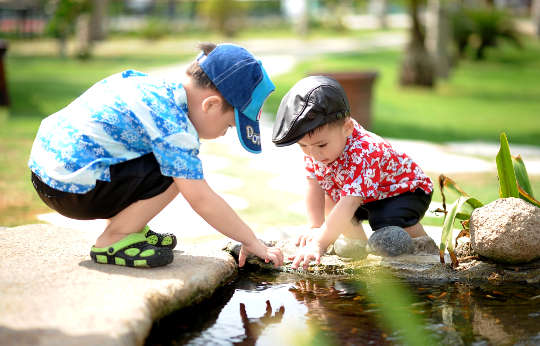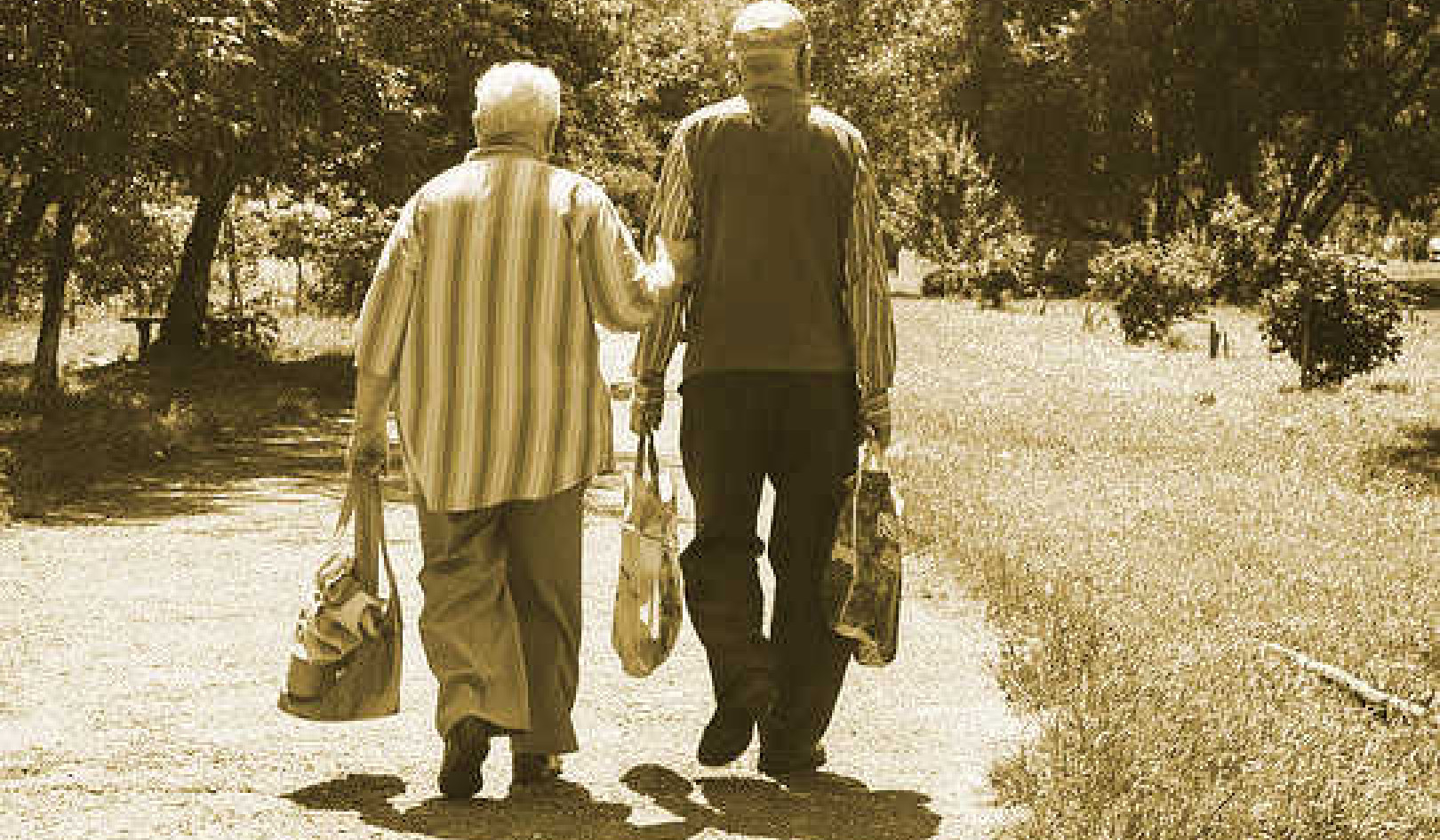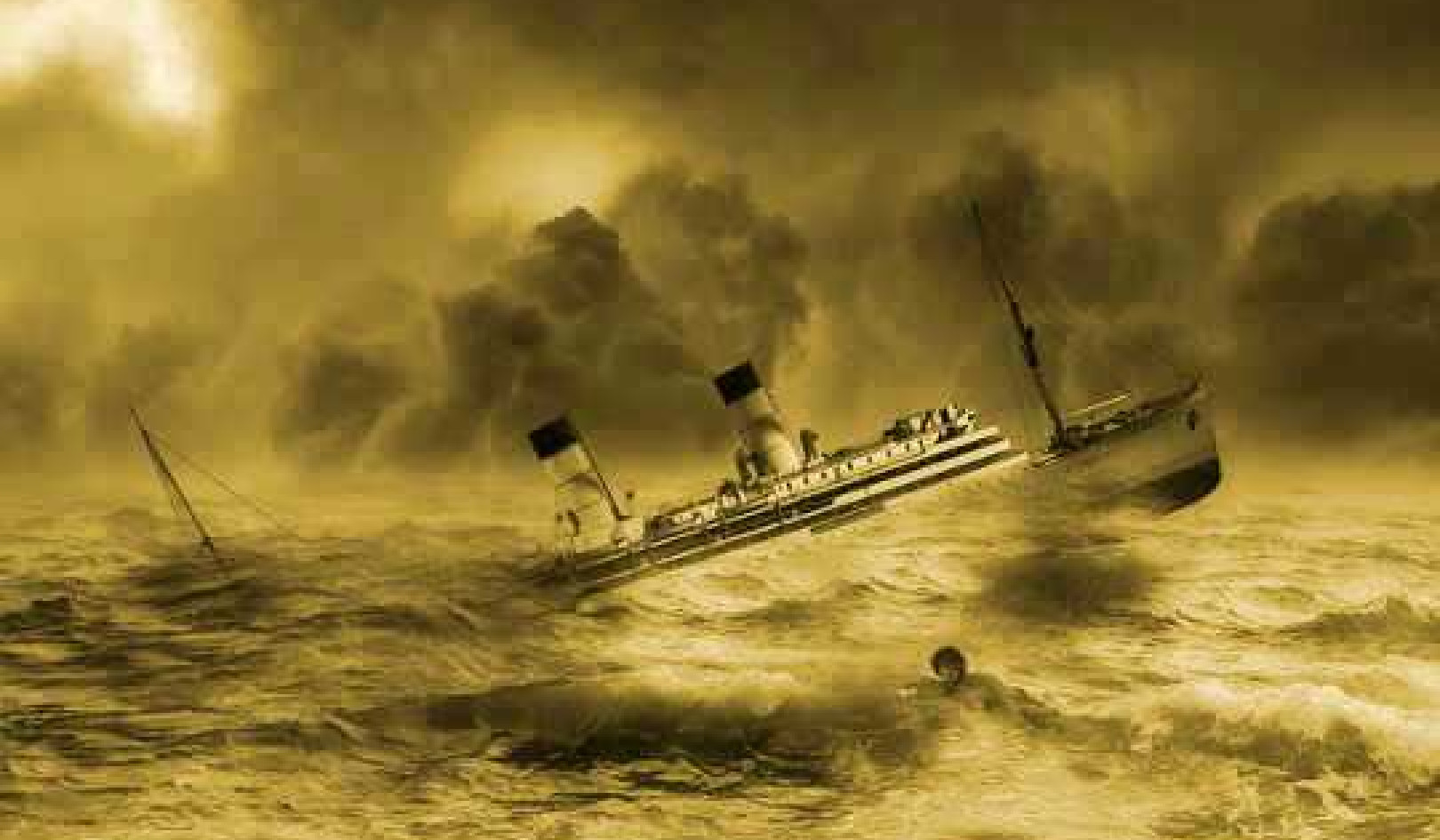
Image by Hai Nguyen Tien
Flow is not only doing something with gusto; it is so much more! Flow also has a significant ripple effect, “a spreading, pervasive, and usually unintentional effect or influence” (Miriam Webster Online Dictionary). When your child gets comfortable with their flow state, they are empowered to be who they are.
Once you allow yourself to let go into an activity, be fully present with it, and abandon your worries of making mistakes — you are free! You experience a moment of vivid, colorful life that no one can take away from you. In this moment, you are the creator of your reality — you are the captain of your ship! You feel affirmed in your existence; everything feels just right. This feeling can be exhilarating or deeply peaceful, and it is contagious!
Creating Space for Flow
Just like a rock skipping on water and creating ripples with each skip, you affect others when you do things differently. Embracing flow brings you into greater alignment with your child’s genuine needs and the truth of your own being.
When you, for instance, prepare a water play station for your child, you are not “inventing” a game your child wouldn’t play without that flow station; instead you are creating space for your child’s natural, playful, learning drive: Young children (usually) love to play with water, and they will do so whenever they have a chance; if they can’t find a water play station, they will play in the bathtub or with their water glass at the dinner table.
Creating space for your child’s natural way of being is giving a powerful message of positive feedback and your child will feel affirmed in their existence. They will feel loved and respected. This, in turn, gives them the self-confidence needed day by day, year by year, to create a healthy, strong identity: I know I am worthy, and I know what I can do!
Counterbalancing the Negativity Bias
Likely a remnant of our need to survive in early human history, the human brain is wired to have a negativity bias, which is the scientific notion that our memory gives more significance to negative experiences than to positive or neutral ones.
In order to consciously counterbalance this deeply ingrained thinking, I encourage you to look back and identify the positive ways in which you brought more flow into your life with children. Balance out any negativity bias that arises and highlight the benefits of inviting more flow into your lives. You can apply this practice to a wide array of contexts and focus on the good.
Think of your own and your child’s progress not by comparing yourselves to others but by comparing yourselves to a year before. Here are some questions to ponder..
* What are the ways in which you created and noticed more flow?
* How did that affect your awareness and relationship with your inner child?
* In which ways did you notice or bring more flow experiences to your child?
* How has your home environment changed?
* For teachers: how did your classroom environments change?
* What are your favorite memories of this time?
*Are there positive effects (ripple effects) you observe in your partner, family, friends and their children, or at your workplace?
Keeping Flow Alive
Keep flow alive by continuing to create flow stations in your home. The spaces you create physically anchor what is first only in our thoughts, making it more accessible. For instance, if you have always wanted to play the guitar but have never learned it, start by creating a place where you would play it. Spend time seeing yourself playing the guitar, daring to imagine the melodies you might play, and how delighted with your music you and others would be.
Look for guitars that are already in your life, maybe at a friend’s house, and ask if you might try to play, or if they might even show you a few chords. As you become more strongly connected to this desire, wait for the right moment for a guitar to come to you or go out and purchase it.
Encourage this visualizing in your children. Keep creating flow stations and adapt them to you and your child’s current skills, needs, and interests. You might even stow away some prepared flow station “kits” for friends and family for when they come over.
Flow is part of self-care, it is an expression of our natural being, and it is contagious. The more you practice it, the more you experience its value, and the more you inspire people to do that same for themselves and their children.
TRY THIS: Time for Gratitude and Celebration
Ah, the wonderful, glowing feeling of fulfillment after a flow experience! That sense of accomplishment and satisfaction! Flow helps a child feel a little “bigger,” and a little more of who they are meant to be.
After children emerge from an adventure in timelessness and periods of intense concentration, you may see a look of gratitude in their face, and a smile that says, “Wow, that was fun!” Sometimes you might even receive some additional, unexpected affection from your child because they feel supported in their authentic self; they were able to naturally release tension during flow, and new wholesome pathways of learning and perceiving were created.
Being in flow, even if it’s just for a few hours, enveloped in that magical out-of-time feeling, is a gift we can give to ourselves. When we allow ourselves to be in flow or to be a catalyst for flow, we slowly realize that we as much as our children are smarter, braver, and more generous than we may ever know!
Making a conscious effort to notice those moments of fulfillment and embodied gratitude makes a huge difference in our quality of life and well-being. Create time for some moments of gratitude every day. At night when bringing your child to bed, is an excellent time to cherish the good parts of the day. Together, you can be grateful for small things and big things alike: Thank you for smiling at me. Thank you for cleaning up. I’m grateful for the blooming tree. I’m grateful for our purring cat.
It really doesn’t matter for what or to whom we are grateful — it is the feeling of gratitude that matters because it is healing, empowering, and uplifting.
And gratitude leads straight to celebration. Make time to celebrate! Make time to party! Every small step toward a better quality of life for you and your child deserves your positive attention and celebration.
A celebration can be as simple as a moment of reflection and a smile. Or it can be a tea party with your child, a dance party in your classroom, or a ritual like lighting a candle. At dinner, raise your glass and give a celebratory speech, express your gratitude, and then invite your child to give a speech. Give yourself and your child a thumbs up, a high five, or a pat on the back: We are doing the best we can! We are making the best of it! We are on our way!
List of reasons to be grateful:
* __________________________
*__________________________
*__________________________
List of reasons to celebrate:
*__________________________
*__________________________
*__________________________
List of dreams and flow projects for the future:
*__________________________
*__________________________
*__________________________
Copyright 2020 by Carmen Viktoria Gamper. All Rights Reserved.
Reprinted with permission: New Learning Culture Publishing
Article Source
Flow To Learn: A 52-Week Parent's Guide to Recognize & Support Your Child's Flow State - the Optimal Condition for Learning
by Carmen Viktoria Gamper
 Flow To Learn an uplifting, illustrated parent's guide offering 52 weeks filled with practical suggestions and compassionate insights to help your child through the ups and downs of childhood.
Flow To Learn an uplifting, illustrated parent's guide offering 52 weeks filled with practical suggestions and compassionate insights to help your child through the ups and downs of childhood.
Using practical, evidence-based tools from the fields of child development, psychology, and child-centered education, parents are guided step-by-step through the creation of simple hands-on activity stations that boost children's love for learning.
For more info and/or to order this book, click here.
About the Author
 Carmen Viktoria Gamper has worked internationally as an educator, advisor, coach and speaker for child-centered education. As founder of the New Learning Culture program, she supports parents, homeschooling families and schools in safely offering child-directed, flow-rich learning environments.
Carmen Viktoria Gamper has worked internationally as an educator, advisor, coach and speaker for child-centered education. As founder of the New Learning Culture program, she supports parents, homeschooling families and schools in safely offering child-directed, flow-rich learning environments.
She is the author of: Flow to Learn: A 52 Week Parent's Guide to Recognize and Support Your Child's Flow State - the Optimal Condition for Learning (New Learning Culture Publishing, March 27, 2020). Learn more at flowtolearn.com.




























